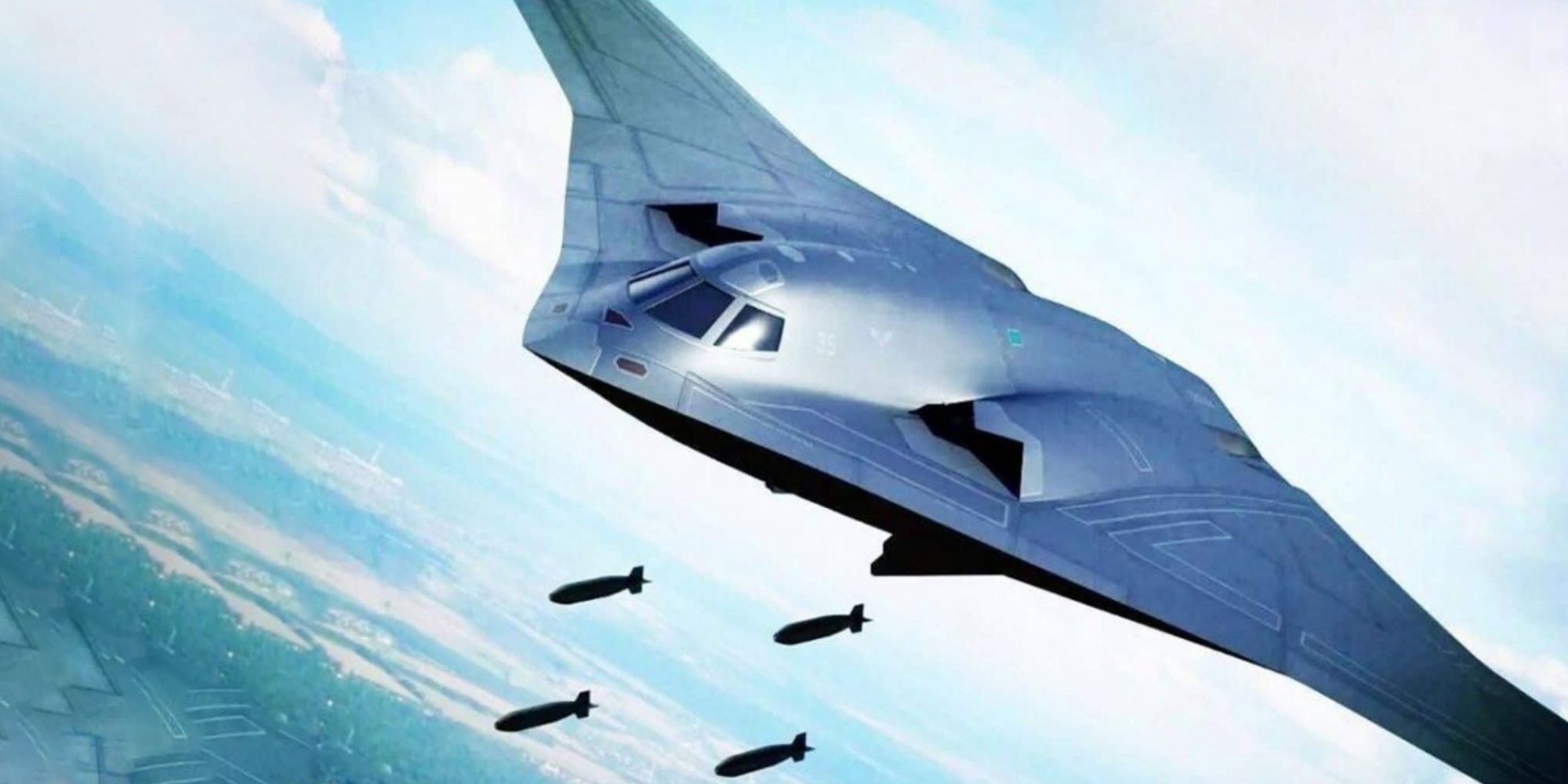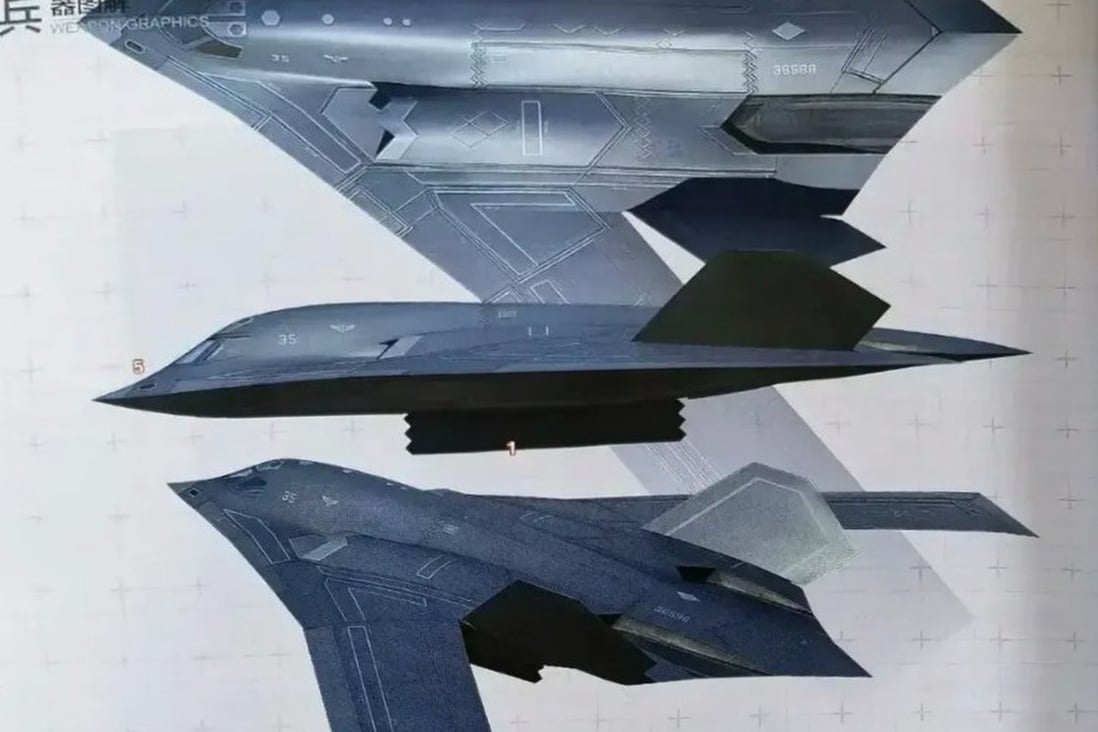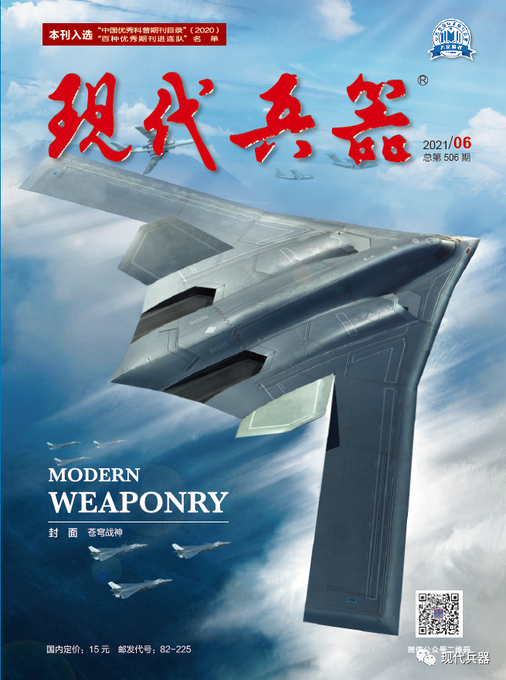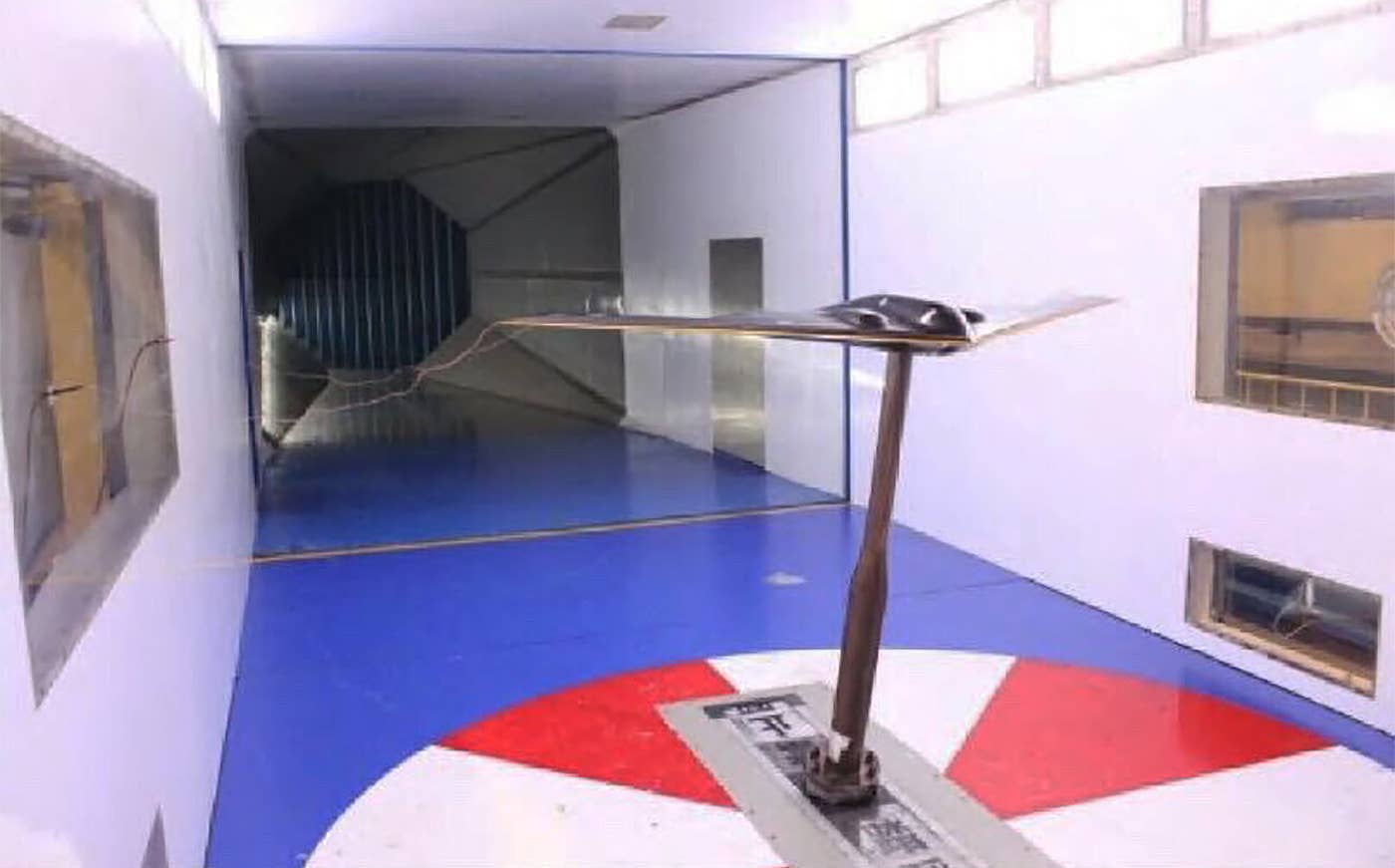Chinese state media hinted in July that the country was planning to conduct a flight test of its upcoming H-20 Bomber in the foreseeable future. Now, images of an aircraft bomber model that could have some link to the final prototype have gone viral on social media.
S-400 Exposed! Russian Tourist Inadvertently Revealed The Location Of S-400 Missiles; Ukraine Says Thank You
Escorted By Su-30 Jets, Russian Tu-95 Bombers Stormed Into ADIZ As US, South Korea Conduct Military Drills
In January 2021, a clip from the PLA Air Force’s recruitment video featured the flying wing design of the next-generation, long-range strategic stealth bomber that has been under development for a long time. This was after a video teased the bomber aircraft in 2018.
The front outline of a similar aircraft was shown in a May 2018 promotional video released by the state-owned Aviation Industry Corporation of China (AVIC). It was wrapped in a blanket with “The Next” written over it, indicating that the flying wing design was comparable to the B-2 bomber used by the US.
However, the recent images shared on social media are different and unique in their own right. They depict what appears to be a metallic wind-tunnel test model, a type of development tool mainly used to evaluate the aerodynamic capabilities of upcoming aircraft designs.
Share more pictures. ?https://t.co/vTo2TSUmR9 pic.twitter.com/ZjGXZwAeIw
— 彩云香江 (@louischeung_hk) August 22, 2022
Besides the wind tunnel model, a white desktop model could be seen being revealed by two pilots — with one of them dressed in a PLA uniform. However, the most amusing of all images is one of the white desktop models perched on a Y-20 transport aircraft (third in the above tweet) which makes little sense.
Ha… whether it's H-20 or not, you can judge for yourself.?https://t.co/vTo2TSUmR9 pic.twitter.com/MIxTfMagvq
— 彩云香江 (@louischeung_hk) August 19, 2022
A cursory glance at the metallic wind-tunnel test model and the white-desktop model indicates that both the models are constructed in different sizes. It cannot, however, be decided at this point which one qualifies as China’s final H-20 Bomber design. The commonality between the two is a flying-wing design.
Aviation Analyst Prashant Prabkhar explaining the Wind Tunnel tests, said, “The tests are generally done in closed, controlled environments, generally with attached meters and gauges which measure various parameters of aerodynamics and flow visualization.”
Ha… Interesting ?https://t.co/vTo2TSUmR9 pic.twitter.com/M6hJFKOPn0
— 彩云香江 (@louischeung_hk) August 23, 2022
EurAsian Times reached out to Chinese military aviation expert Andreas Rupprecht to understand the wind-tunnel testing video that has appeared online. He told us that the wind tunnel model seen in the video did not exactly look like a wind tunnel model as the whole arrangement lacked precision but that it seemed it was probably not built to test this configuration.
“The banner says “热烈庆祝某型机FADS风洞试验模型系统研制成功,” which translates as “celebrating the successful development of FADS wind tunnel test model for a certain aircraft.”
FADS likely refers to Flush Air Data Sensing- basically using openings in an aircraft’s fuselage to arrive at its speed, angle of attack, etc. The probe resembles a giant pitot tube that pokes way out ahead of the aircraft and directly into the airstream, and it’s usually used during an aircraft’s development phase.
So it is possible that this particular model of a stealth bomber design was put through the wind tunnel to obtain the expected air data, which could then be compared with data obtained from the FADS probe on an actual prototype,” according to Rupprecht.
Although the Chinese stealth strategic bomber is clad in mystery, the US Defense Intelligence Agency (DIA) had earlier assessed that the Xian H-20 stealth bomber would have an operational range between 4,000 to 5,000 miles.
In addition, some reports have indicated that the strategic stealth bomber would be able to carry 45 tons of payload and can fly long distances without mid-air refueling.
However, anyone outside China can’t say much with conviction about the aircraft’s design, structure, and configuration, as the H-20 is a highly classified program. For the same reason, the latest screenshots have induced skepticism and excitement.

What Do We Know About The Chinese Bomber?
As per a previous article published in the South China Morning Post, the bomber may have adopted a stealthy flying wing design to help it strike targets in the second island chain and beyond. If these assertions are anything to go by, it could become a massive worry for the United States.
The mystery-clad bomber has had its moments even before the official unveiling. A 2021 edition of Modern Weaponry, a monthly magazine by state-run defense corporation China North Industries Group, or Norinco, released four computer-generated pictures of the design of the Xian H-20.
The images indicated that the aircraft had a weapon bay, two adjustable tail wings, airborne radar at the front, and two stealth air intakes on both sides, all covered in a dark grey radar-absorbent material.

At the time, Jon Grevatt, a fighter jet expert and Asia-Pacific defense analyst at Janes, said that the pictures showed that the H-20 prioritized stealth and long distance over speed. None of these aspects have been highlighted in the recent pictures that have surfaced online.
It is pertinent to note that the two models doing rounds on the internet resemble the other unofficial depictions of the previously published images, like the one shown above. It also has similarities with design elements mentioned in the research papers and speculative reports.
Earlier reports have stated that the H-20 is expected to boast an active electronically scanned array (AESA) radar to detect targets, threats, and other dangers more accurately and carry sizeable internal weapon loads. Additionally, it could be expected to carry CJ-10K or CJ-20 land-attack cruise missiles capable of carrying conventional or nuclear bombs.
EurAsian Times spoke to experts to dig deep into the probable structure and design of the super-secretive stealth bomber.
“H-20 has been expected to be a flying wing stealthy bomber for a long time. Form follows function, and one only needs to see all stealthy flying wing UCAVs that exist in the world, or the various high wing mounted T-tail transporters of the world,” said Rick Joe, a PLA aviation analyst.

This was a recurring theme in EurAsian Time’s interaction with other aviation experts who declined to comment, given the lack of information about the stealth bomber. The Chinese Bomber has also been referred to by many on the internet as similar to the US B-2 Bombers.
Similar To The American Bombers?
It is important to note that previous images that surfaced online in 2019 (below) depicted a different wind-tunnel test model, one that appears to have been a close replica of the B-2 Spirit stealth bomber used by the US Air Force. Possibly, the Chinese were testing the capability of the American bomber instead of its own.

Rupprecht says, “It is neither similar to the American Bomber nor a copy. The cranked wing design – more akin to an enlarged X-47B – and the folding tails – no other stealthy design so far has – make it unique.
Otherwise, similar to modern cars, trains, and airliners, which all share certain details and design similarities, there are not many options in shape for a system with similar performance requirements and dimensions to look vastly different. In my opinion, all these copy claims are more based on other motivations than facts.”
Previous reports had said that the H-20, expected to fly at subsonic speeds, would be equipped with nuclear and conventional missiles, have a maximum take-off weight of at least 200 tons and a payload of up to 45 tons, and potentially fire four powerful hypersonic stealth cruise missiles.
The H-20 bomber project in China has garnered worldwide interest. The subsonic stealth bomber would give China a “true intercontinental” capability, the London-based Royal United Services Institute for Defense and Security Studies claimed in a paper published in late October 2021.
The only operational stealth bomber in the world today is the B-2 Spirit of the US Air Force, which first flew in 1989 and entered operational service in 1997. However, China could now be expected to catch up soon and end America’s reputation of having the only stealth bomber.
- Contact the author at sakshi.tiwari9555@gmail.com
- Follow EurAsian Times on Google News




